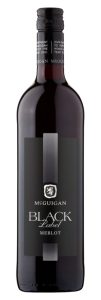Merlot is such a frequently encountered variety that it is often taken for granted.
So, I have decided to look at it in a bit more depth today.
Another potentially neglected area by wine-centred commentators is branded wines.
For sure, we do love those niche offerings lovingly prepared by the David’s of the wine production world.
But the Goliaths may also have a tale to tell.
After all, many people are drawn towards those big selling, and often reassuringly consistent, wines with familiar names.
So, this post unites those (normally unrelated) themes to find our MidWeek Wines Benchmark Branded Merlot.
Also featured is a suggestion on a whisky for Burns Night.
Once again, a picture and hyperlink is included to make it easier to track down the item in question.
First, then Merlot’s characteristics.
The variety is renowned for its versatility and crowd-pleasing potential which, taken together, make it one of the world’s most popular red wine grapes.
Those characteristics often materialise as gentle cherry flavours enhanced by spicy touches but, usually – in line with popular current preferences – relatively little tannin.
Typically, it wins friends with soft, easy-drinking, light, mild, and smooth red wine with appeal to a wide range of palates.
Denser, more complex versions, still exist but they are less common now and can be more costly to produce.
Merlots early rise and fall.
Historically, merlot first rose to prominence in Bordeaux – which should not surprise us since it has the same dad (cabernet franc) as cabernet sauvignon.
It became a major player there partly because its early ripening and suitability for cool, moisture retaining clay soils, make it an obvious complement to its “polar opposite” half-brother.
However, Bordeaux’s deep, black fruit based and savoury merlots no longer enjoy the demand they did.
Instead, other parts of the world started to become the “go-to” places for the variety.
Eastern Europe and Chile are two important beneficiaries but they are by no means alone.
Indeed, merlot can thrive in many places at the right latitude where cold, wet soils stop other varieties giving of their best.
In fact, many contend that overly dry soils actually reduce the quality of merlot.
What about branded versions of merlot?
Yes I did say that branded options would be today’s theme.
And it certainly makes sense to link an enormously popular wine, with huge availability, to the world’s biggest bottled wine suppliers.
After all, those operations have the benefit of focus-group driven marketing and deep pockets (allowing widespread advertising and attractive promotional discounts).
So many of them are well placed to provide inexpensive, dependable versions with good year-on-year consistency.
Consequently, I took a close look at eight of the biggest selling brands of merlot.
What did I find?
Well, first, I was surprised by the wide differences – but perhaps that is because each producer is targeting different sets of consumers.
Nevertheless, I did not expect to find such big variations about depth (or, in truth, lightness).
Possibly that lightness is being accentuated by the current (alcohol tax related) quest for smaller abv’s – the lower the alcohol, it seems, the less texture to the wine.
Equally, however, I did not expect big differences in ripeness (and, hence, sweetness),
Nor other versions with pronounced savoury elements that sometimes overshadowed the fruit.
So, I decided to select a tasty benchmark merlot that is especially effective at bringing together the variety’s best and most typical qualities.
That should help readers negotiate a path through what some might consider the “merlot jungle”.
That way, anyone often buying one particular branded merlot can then compare their normal purchase with the benchmark version.
Whichever suits their personal tastes better wins the day – and can be bought with confidence.
Equally, anyone looking for a typical, widely available, entry point merlot can use my benchmark choice as a start point.
Time now for that anticipatory drumroll.

2023 McGuigan Black Label Merlot (£7 at Asda but available in other retailers too, and 12.5% abv):
The heat of Australia does not always help merlot because rapid ripening often produces jammy versions.
Even worse, sunshine encourages vines into uncontrolled growth and, hence, the over-cropping that reduces concentration and intensity.
Here, though, the “South Eastern Australia” label suggests that McGuigans (invariably reliable producers) can trawl though numerous vineyards to catch grapes harvested at the right point.
What does the benchmark option taste like
Opening with aromas of black fruit, it goes on to provide soft cherry, loganberry and plum flavours.
Those elements are nicely bound into a medium bodied texture containing acidic verve, firm-ish tannin and touches of chocolate, baking spice, vanilla and gentle oakiness.
Closing thoughts.
Once you have selected your preferred merlot, do not hesitate to benchmark that against the particular retailers premium “own label” option (Finest, Best, Extra Special, Taste the Difference etc).
Often, they offer a useful upgrade that fully justifies any extra cost.
Incidentally, when benchmarking, have both bottles open at once, pour a glass of each and test them sip for sip.
Finishing one bottle before you open its rival does not work anything like as well.
Bonus for Burns Night.

Saturday is, of course, Burns Night so you may be looking for a good value whisky with which to toast the haggis.
Here is my suggestion …
Ben Bracken Highland Single Malt (£18.20 at Lidl):
To be fair, both Lidl and Aldi have a good range of well-priced and carefully sourced whiskies.
However, this Highland option is a personal favourite with its taste and smell of cappuccino coffee.
Its foundation is centred around soft, fudge, black pepper and caramel flavours accompanied by subtle marzipan sweetness that complements the spiciness of haggis well.
It’s a broader look at budget (but great value) fare in Monday’s Top Tip selections but next Thursday’s post builds on today’s ideas about benchmarking to consider tastings more generally.









23 responses
Whisky is such a Marmite drink.
My son and I went on an intensive week long whisky holiday tour around all 9 distilleries on Islay.I would highly recommend the whiskies and Islay, but not the unreliable Cal Mac ferries.
The Islay whiskies are full of smoke, fire and peat.They are aggressive; you realise that you are in a fight with Mike Tyson and as in any fight you learn to parry the brutal punches, work out what is going on and throw a few back.
A lot of people take fright, throw in the towel and swear never to drink whisky again.
But you can choose to dance like a ballerina in Swan Lake, with something ultra smooth like Glenmorangie or dilute whisky in a highball with loads of soda water, ice and a twist of orange.You might like it!
Amongst many others we tried Octomore from Bruichladdich, which is a super-heavily peated whisky, something like bog snorkelling and not for beginners- a mere £140 a bottle.Probably never to taste again, which is why a whisky distillery tour at about £25 is such a bargain.
My favourite of the Islay whiskies was Kilchoman Machir Bay.A very rare example of barley to bottling all taking place on site in a farm distillery, next to a stunning beach.The barley is grown with great difficulty on the farm and apart from Bruichladdich which also uses some Islay barley, the other bigger names all import their barley from the mainland.But still about £45 a bottle.
Far more accessible and a good choice for beginners would be the versatile Shackleton Blended Malt Whisky, £20 from Amazon- need a minimum spend of £35 to get free delivery.A fabulous historic label and a Mackinlay’s special, created in honour of the 11 bottles of ( still liquid) whisky that were recovered from the ice in 2006 from the Ernest Shackleton’s 1907 Antarctic Nimrod expedition.
Good to drink by the fire – perhaps ,heavens forbid, with an entirely appropriate ice cube, whilst reading about the 1916 voyage of the James Caird lifeboat ,when Shackleton and five men sailed 800 miles through the Southern Ocean- one of the greatest small boat journeys in history.
Small being the operative word, well worth viewing in Dulwich college- 7 metres long and just less than 2 m beam.
I would be filled with trepidation sailing it across Southport inland marina lake.Just ponder the courage, seamanship, endurance, hardiness and determination of these few men who had utter faith in the leadership of Shackleton.
Interesting story Paul, what a fabulous way to spend a week!
Perhaps it was just me but I remember finding that, after 12 hours on Islay, the peatiness felt much less intense and you could appreciate the supporting flavours much better.
Oh ,I don’t like to brag ,but dated after my post above ,this extract from Phil Dwyer manager of the Manchester Whisky shop appeared in his article “The best value single malts for 2025′:
“Off to Islay for this one. With so many options on the smoke-filled gem of the West Coast, Kilchoman Machir Bay stands out as the island’s most consistently excellent release. Matured in 90% ex-bourbon casks with a touch of sherry influence, this whisky delivers a bold, smoky, and savory punch, balanced by just the right amount of sweetness from the American oak.
For those who prefer a sherry-forward profile, there’s also the majority sherry-matured Sanaig, which is undeniably delicious.”
OK,I do like to brag.!
… And entitled to do so!
I suggest we confuse Islay Malts to Midland wine subscribers. You mention bottles that are way out on the “Outer Edge” whereas many customers are seeking these Middle of the road scenarios. Many excellent bottles bottle at a quarter of these (200 +peat ppm levels) Peat ppm vary so why not focus on a lesser level of peat?
Hi Brian
Nice article and very Interesting, I remember a few years back the fuss the Movie ‘Sideways’ caused around Merlot, and I think (tongue in cheek) it never recovered.
I don’t tend to drink a lot of Merlot on its own, not because I don’t like it, to be honest I’m not really sure why. When I do drink Merlot, it’s mostly in blends, where it tends to soften things up a bit, although I’m not a big fan of Bordeaux’s, my preference is always from the ‘Right bank’.
Must pick up a bottle of that McGuigan’s, one of the more reliable Big brands (I can’t remember whether I’ve tasted it or not). Tesco do a lovely Merlot (Paul Mas Reserve Merlot) but think it’s around £10, M&S Burra Brook is good value at £7 and Sainsbury’s House Merlot is a reasonable party wine at £5.50
I may be wrong but didn’t Sideways focus on Pinot Noir?
Pinot Noir yes, but with Miles (the main character) having a dislike of Merlot, I think Pinot sales increased and Merlot decreased because of the film
“If anyone orders merlot, I’m leaving. I am not drinking any f*&!ing merlot” – apparently that one line uttered by Miles in Sideways reduced worldwide merlot sales.
Thanks for the heads up on those other merlots and yes the dig at merlot in Sideways must have been tongue in cheek. Especially so as the “prize” bottle featured throughout the film (Cheval Blanc) is merlot led – albeit with some cabernet franc too. The screenwriter must have been horrified when consumers took his disparagement of the variety seriously.
Interesting and educational recommendations as always Brian. My wine snobbery often makes me swerve labels like McGuigan, regularly reduced in price at Morrison’s, so I might have been missing a treat. I will rectify that shortly.
Your comments about abv’s are also interesting. I did read somewhere else, rightly or wrongly, that alcohol content of wines is only ever approximated as there are not the same limitations in their countries of origin on abv. The finished wines are very rarely analysed for alcohol content. In other words there is not much preventing a manufacturer labelling a wine as 10.5% when, in fact, it might actually be 12.5% and nobody would be the wiser (and the duty would be less).
Lidl’s single malts are well worth sipping of an evening at their usual price of £17.99. I keep a bottle of the Highland and Islay to hand, largely for medicinal purposes, of course.
With those medicinal malts handy, it must be a pleasure to be ill. On the abv point, yes there is a quite wide margin of error (0.5 to 1 percentage points) allowed.
Thanks for sharing your experience Brian, as a complete wine novice I have sampled a few McGuigan offerings but yet to try their Merlot. It’s on my shopping list already!
I hope it lives up to the billing, Brenda. I love to hear about (usually over-modest) “wine novices” trying new things. Encouraging it, is built into the the DNA of this site.
McGuigan’s Black Label Merlot at Morrison’s – 2 for £11. Must be worth a try at that price.
Thanks for pointing that out – and, as you say, a great price. The wine was on offer at Asda but the retailer did not say when the promotion would end which is why the post said nothing about it.
Smashing appreciation of all things Merlot here Brian. But try as I might I can’t personally get into bed with much from Oz, Merlot or otherwise. Same for the USA. I disappoint myself here I’m sad to admit for lack of an open mind and I’m sure as with all things there will be wines that wouldn’t challenge my prejudices if I was to work at it harder.
That said Merlot from the Old World still features large in my racks with the still wonderful Eglise-St-Jaques Bergerac from Tesco and Asda’s Montagne St Emilion always available there. And indeed some more pure Bordeaux bottles that do work for me.
Jumping on the bandwagon of populism isn’t usually my thing and certainly the most commercially driven days in the calendar like Valentines, St Patrick’s and Trick or Treat I’m happy to let pass without a second glance (though Halloween when it comes around on October 31st is also my birthday!) .
But a long association with working and holidaying in Scotland and having many Scottish friends too I find it hard to resist the pull of Burns Night. A strong resonance when it comes to true traditional values here being celebrated by a nation at one with itself regardless they are properly old-fashioned that even younger Scots get.
The whisky industry especially must look forward to increased sales of their product in January, both home and abroad. I know people who have entertained at Burns’ Suppers in places like Borneo and Vietnam for local Scottish Associations, such exotic gigs as these are. Me, I did one once at Hartlepool Sailing Club complete with the haggis address and a recital of Tam o’ Shanter!!
There seems to be honest pride at work here. A uniqueness that the English can’t come close to matching when we don’t even bother to acknowledge the birthday of our own national treasure and mighty bard, Shakespeare !!
But the Scots have no such reticence and so soon after Hogmanay out come the drams once more this time in the company of the ”great chieften o’ the pudding-race” … that mighty mutton offal HAGGIS .. wi neeps and tatties as sides. I like peppery onion gravy with mine. More likely swede than turnip these days too!
Your whisky recommendation here from Lidl is already on my shelf, plus the Aldi Highland too, as are several other veritable drams including a version of my grandad Walker’s preferred tipple of Dewar’s White Label, a scotch of not such great renown, I do understand with a little too much ”burn” for some, Dewar’s actually found less in Scotland back in the day and more in ex-pat colonies like Singapore and Hong Kong, where he lived and worked most of his life, but returned homed after 50 years with his own tradition of a dram every night. I just got their 12 Year Old Bourbon Cask and it’s lovely.
So one for old times sake, I’ll toast the Bard and my grandad in tradition at the same time on Saturday. In the meantime the Vergelegan Cabernet Sauvignon just arrived from TWS … just time to address that first I think.
Slainte …
Being married to a Scot, much of what you say resonates with me. And, the nation are canny enough to make three major celebrations (St Andrew’s Night, Hogmanay and Burns Night) coincide with, and bring cheer to, the end of the three bleakest months of the year.
I too , am married to a Scot.
I remember many a wild Hogmanay.One in particular in a remote Rannoch moor scout hut in a Ceilidh.The vicar was present, so no drinks on view, but many trips to the toilet where hip flasks suddenly appeared.
The girls and women spent most of the evening horizontally in the air and being flung about in circles.
Surprised no one has mentioned the excellent ‘”First footing ” tradition where we trailed around the houses with salt,bread and coal in one hand and a proffered whisky in the other.
Grand people the Scots,except for their rugby team.
What specifically in factual terms Paul, is wrong with the Scottish Rugby Team? I am Scottish and very proud of their Rugby team. It’s OK to cast negative vibes but why? Is your wife supportive of your remark?
Eddie, as Scottish I feel you seem to have a fairly accurate basic understanding of Scotland unlike others on this post. My concern is Scottish Whisky is not represented by any 40%, chill filtered, E number 140A non “craft” whiskies. 43% is only a basic beginner level and 46% is normal entry level. We in Scotland abhor “Scotch whisky” with E numbers. I doubt professional Scottish owned Companies would use such chemicals however foreign companies own some of our Distilleries. We Scottish folks understand the Companies that cut the Mustard and those that are fake so we can buy the “right stuff.”
Hi Chris,
Nothing wrong with the Scottish rugby team.I like the way they play ,the professional way they present themselves ,their considered use of language and how they represent the best of Scotland and their team spirit is excellent.In the same way as you, I am very proud of the Welsh rugby team.
Perhaps you have mis interpreted what was a light hearted joke ?